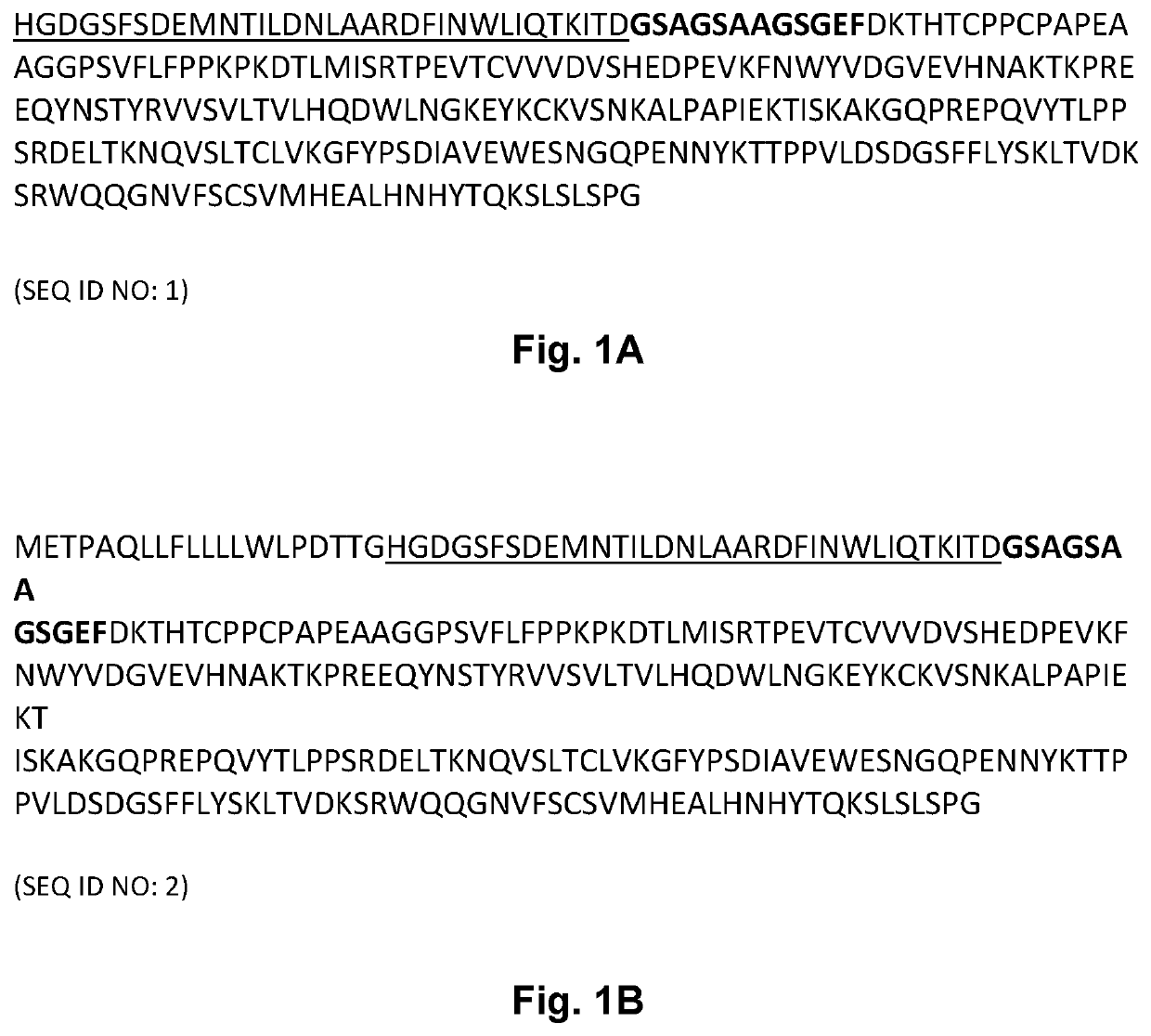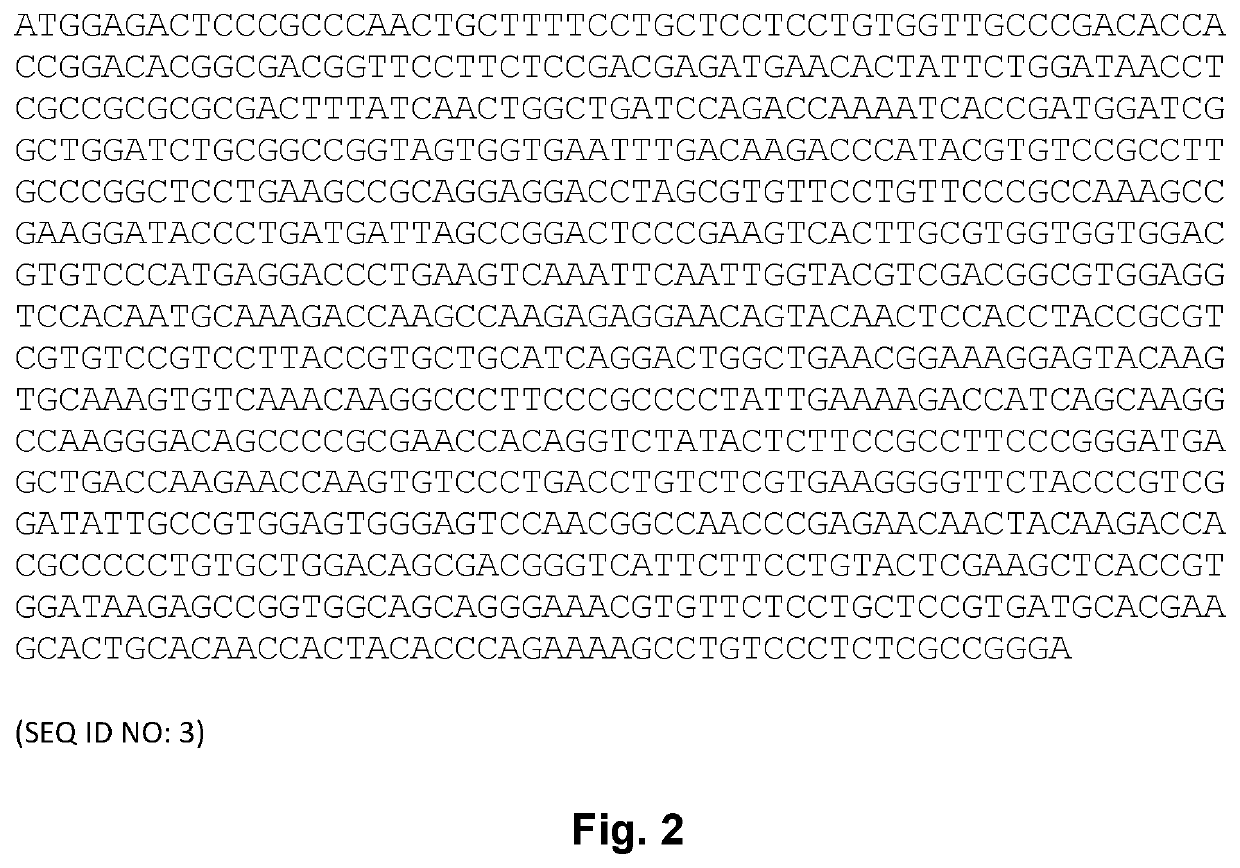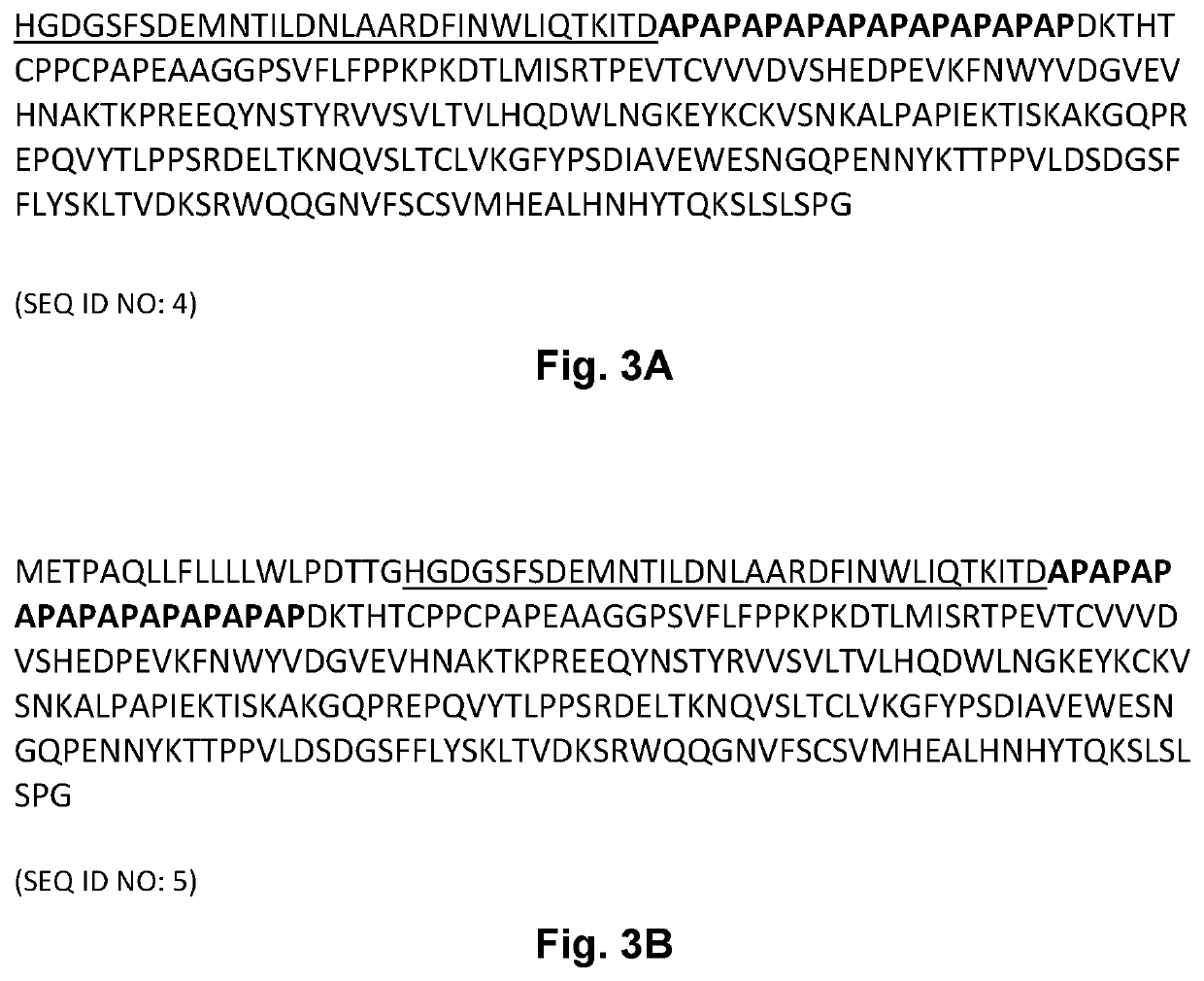Glp-2 fusion polypeptides and uses for treating and preventing gastrointestinal conditions
a fusion polypeptide and glp-2 technology, applied in the field of mammalian glp2 fusion polypeptides and proteins, can solve the problems of high morbidity and mortality, malnutrition, dehydration and weight loss, and the inability to administer glp-2 by itself to human patients, so as to reduce apoptosis, reduce apoptosis, and treat or prevent radiation damage to the gastrointestinal tract.
- Summary
- Abstract
- Description
- Claims
- Application Information
AI Technical Summary
Benefits of technology
Problems solved by technology
Method used
Image
Examples
example 1
Protein Stability Analysis
[0183]Each of the GLP-2 peptibodies is tested by determining melting temperature with nanodifferential scanning fluorimetry (NanoDSF). NanoDSF is a measurement of protein stability over a range of temperatures, with a temperature ramp employed. The stability of tryptophan is measured by fluorescence, as reflected in a ratio of fluorescence at 350 nm to fluorescence at 330 nm. From the assay, one or more melting temperatures are determined. Because a protein in a certain state is understood to have a melting temperature, the number of melting temperatures observed reflects the number of different states.
[0184]A SEC-MALS assay was performed to determine the primary state (main peak) and its molecular weight. The results are shown in Table 1 below. The GLP-2 peptibody A has the amino acid sequence set forth in SEQ ID NO: 1. The GLP-2 peptibody B has the amino acid sequence set forth in SEQ ID NO: 4. The GLP-2 peptibody C has the amino acid sequence set forth i...
example 2
In vitro Potency of GLP-2 Peptibodies
[0185]The EC50 of GLP-2 peptibodies was assayed in vitro using the cAMP Hunter™ eXpress GLP2R CHO-K1 GPCR assay from DiscoverX. The cAMP Hunter™ assay is based on enzyme fragment complementation (EFC). In EFC assay, the enzyme donor is fused to cAMP. Increased intracellular cAMP due to GLP-2R activation competes with ED-cAMP for antibody. Unbound ED-cAMP complements the enzyme acceptor to form active beta galactosidase, which subsequently produces a luminescent signal.
[0186]The CHO-K1 cell line used is overexpressing human GLP-2R (Genbank accession number NM004246.1). Cells were treated with various dilutions of the GLP-2 peptibodies listed in Table 2. Following cell lysis, agonist activities of the GLP-2 peptibodies were assayed via measurement of the concentration of cAMP. Sigmoidal curve fitting was undertaken to arrive at EC50 values, as shown in Table 2 below.
TABLE 2GLP-2 Peptibody / PeptideEC50 (nM)R2A4.790.93B0.760.95C1.480.98D4.070.99
[0187]...
PUM
| Property | Measurement | Unit |
|---|---|---|
| concentration | aaaaa | aaaaa |
| concentration | aaaaa | aaaaa |
| length | aaaaa | aaaaa |
Abstract
Description
Claims
Application Information
 Login to View More
Login to View More - R&D
- Intellectual Property
- Life Sciences
- Materials
- Tech Scout
- Unparalleled Data Quality
- Higher Quality Content
- 60% Fewer Hallucinations
Browse by: Latest US Patents, China's latest patents, Technical Efficacy Thesaurus, Application Domain, Technology Topic, Popular Technical Reports.
© 2025 PatSnap. All rights reserved.Legal|Privacy policy|Modern Slavery Act Transparency Statement|Sitemap|About US| Contact US: help@patsnap.com



